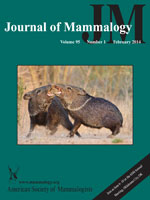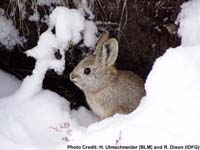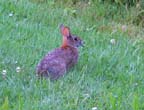 Here are the articles of interest in the most recent issue of the Journal of Mammalogy:
Here are the articles of interest in the most recent issue of the Journal of Mammalogy:
If you are in javalina country, learn more about where to find them, based on research in the southern San Andres Mountains, New Mexico
If you have an interest in Great Plains pocket mice, their taxonomy may be more confusing that you think.
If you work at high elevation, it may interest you that pikas may survive by eating things they usually don’t.
How will climate change effect the ecology of the Great Plains? Voles are strongly affected by snow cover, otherwise, it looks like other factors are more important to rodent survival.
If you are concerned with invasive species, particularly honeysuckle, white-footed mice will eat just about any native species before they go for the fruits of an invasive honeysuckle species.
If you work with Indiana bats: they congregate in larger numbers during colder winters, possibly tipped off by late summer weather patterns.
If you work with brown bears: even when they are able to eat an all-protein diet, they will select foods that keep the protein balance in line with the percentage found in other omnivores.
Or, read the entire issue. A subscription or fee is required to get beyond the abstracts.

 The Georgia Department of Natural Resources’ Nongame Conservation Section recently released its
The Georgia Department of Natural Resources’ Nongame Conservation Section recently released its


